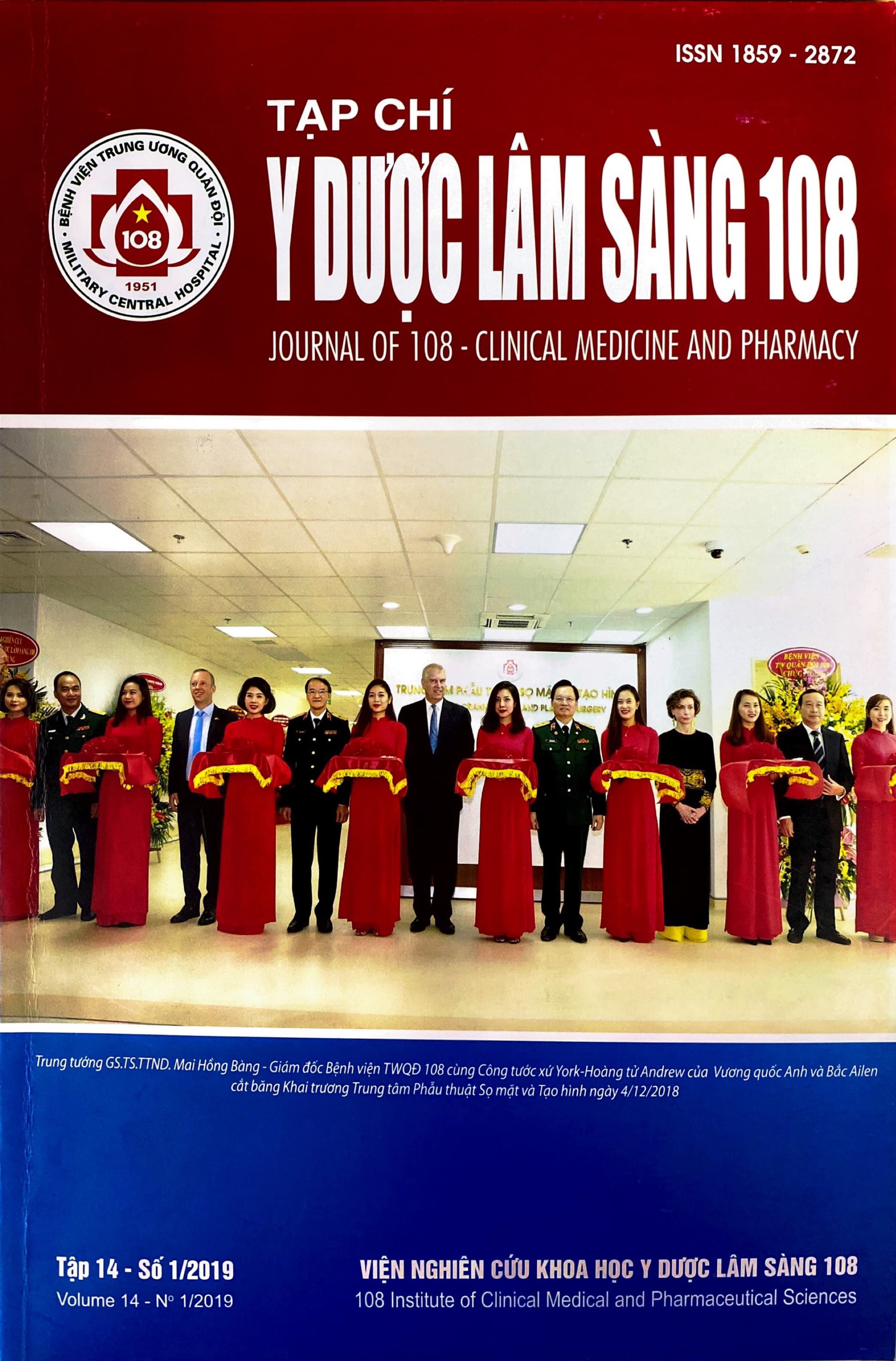Value of Rockall and Blatchford scale in evaluating prognosis of patients with gastrointestinal bleeding due to gastro-duodenal ulcers
Main Article Content
Keywords
Abstract
Objective: To determine the value of Rockall and Blatchford scores in prognosis of patients with gastrointestinal bleeding from peptic ulcer disease. Subject and method: One hundred and fifty patients with obvious symptoms of upper gastrointestinal bleeding in the Gastroenterology Department of 108 Military Central Hospital were enrolled. Full Rockall scale and Blatchford score were calculated. We followed the patients for records of rebleeding and 1-month mortality. A receiver operating characteristic curve using areas under the curve (AUCs) was used to statistically identify the best cut-off point. Result: There were differences in the Blatchford score for digestive bleeding between Forrest I and II groups (p<0.05). The patients needed blood transfusion had higher clinical Rockall scale, complete Rockall and Blatchford score than those without transfusion (p<0.001). The full Rockall score was the most valuable in prognosis of mortality and recurrent bleeding, which were 0.825 and 0.733 respectively. The Blatchford scale had the best prognosis value for blood transfusion and surgery with corresponding scores of 0.888 and 0.868. Conclusion: The Rockall clinical and Blatchford score were significant in predicting the therapeutic efficacy and risk assessment of therapeutic interventions.
Article Details
References
2. Quan S, Yang H, Tanyingoh D et al (2015) Upper gastrointestinal bleeding due to peptic ulcer disease is not associated with air pollution: A case-crossover study. BMC Gastroenterology 15: 131-137.
3. Hreinsson JP, Kalaitzakis E, Gudmubdsson S et al (2013) Upper gastrointestinal bleeding: Incidence, etiology and outcomes in a population-based setting. Scandinavian Journal of Gastroenterology 48: 439-447.
4. Rockall TA, Logan RF, Devlin HB, Northfield TC (1996) Risk assessment after acute upper gastrointestinal haemorrhage. Gut 38(3): 316-322.
5. Blatchford O, Murray WR, Blatchford M (2000) A risk score to predict need for treatment for upper-gastrointestinal haemorrhage. Lancet 356: 1318-1132.
6. Lee SH, Jung JT, Lee DW et al (2015) Comparison on endoscopic hemoclip and hemoclip combination therapy in non-variceal upper gastrointestinal bleeding patients based on clinical practice data: Is there difference between prospective cohort study and randomized study?. Korean J Gastroenterol 66(2): 85-91.
7. Mokhtare M, Bozorgi V, Agah S et al (2016) Comparision of Glasgow-Blatchford score and full Rockall score systerm to predict clinical outcomes in patients with upper gastrointestinal bleeding. Clinical and Experimental Gastroenterology 9: 337-343.
8. Martinez Cara JG, Jimenez-Rosales R, Ubeda-Munoz M et al (2016) Comparision of AIMS65, Glasgow-Blatchford score, and Rockall score in a European series of patients with upper gastrointestinal bleeding: Performance when predicting in-hospital and delayed mortality. United European Gastroenterology 4(3): 371-379.
9. Dicu D, Pop F, Ionescu D et al (2013) Comparision of risk scoring systems in predicting clinical outcome at upper gastrointestinal bleeding patients in an emergency unit. American Journal of Imergency Medicine 31: 94-99.
 ISSN: 1859 - 2872
ISSN: 1859 - 2872
